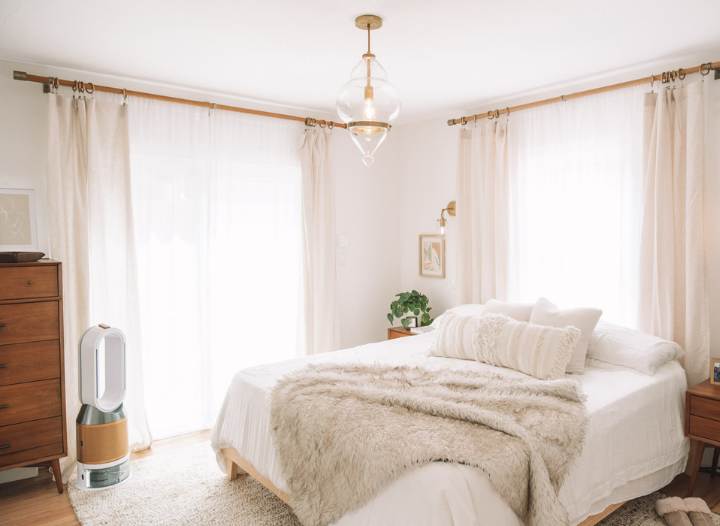We were sitting enjoying a quiet beer at a bar in Ghent when I realised we’d made the right decision. Ghent was humming but not heaving, cheerful but not chaotic. It was the first night of our three-week Interrail trip with our 18- and 16-year-old sons. Now, after a long train journey, the calm ambience of the medieval Belgian city left us feeling relaxed rather than exhausted.
An Interrail ticket opens up 33 European countries by rail and many people seize the opportunity to visit capital cities on their bucket list. A typical itinerary takes in big hitters like Paris, Prague, Rome and Madrid. We decided to do things a little differently.
Our ultimate destination was Budapest, but our route there and back took in smaller, less frenetic towns and cities. We opted for Delft and Utrecht rather than Amsterdam, Baden-Baden in Germany’s Black Forest instead of Berlin, Salzburg over Vienna and Lausanne, not Zurich.
We arrived in Brussels by Eurostar. The station was busy and confusing, and the train out hot and crammed. Ghent, when we emerged an hour later, was positively serene by comparison. That first night, we ambled to the beautiful quayside, crammed with cafes and bars. There was no problem finding a table. It was July and still light as we wandered back to our hotel at 10pm, the streets quiet despite it being Saturday night.
We’d chosen Ghent as a base for our first three nights, partly because it was handy for exploring other places. Our 22-day continuous rail pass meant no extra travel costs and we were determined to make the most of it.
Bruges, our first day trip, was all cobbled streets, canals, horse-drawn carriages and chocolate shops. A half-day guided tour of Ypres the next day took in battlefields, cemeteries and memorials (perhaps not the most obvious thing to do with teenagers, but it brought to life what they’d studied in history).
Our final day in Belgium was spent in Brussels, partly because we had to catch a 6.23am train to Munich (via Frankfurt) the following day and we sprinted around the main sites.
I’d reserved seats in advance – while Interrailing gives you free access to most trains, some have compulsory seat reservations and others you’d be wise to book to avoid sitting on the floor for several hours.
Debates rage on Facebook Interrail forums about the merits of “winging it” (as I’d done as a student 35 years earlier), as opposed to meticulous planning. But, I realised, wingers are usually travelling without teenagers and outside peak season. Knowing everything was already sorted meant we could relax.
After a brief stop in Munich, where we joined a free walking tour (advisable to book) and learned a lot about the city in record time with our entertaining guide Ricardo, it was a short hop over the border to Austria. We spent three nights in Salzburg, a graceful, historic city which we fell in love with. The centre is pedestrian-friendly and compact, and we walked our feet off and ate our body weight in chicken schnitzel. We’d carefully arranged to be in Salzburg on a Saturday so we could do a parkrun, to burn off a few extra calories. The boys nipped to nearby Hallein to tour a salt mine and toboggan down a mountain. I booked myself on to a Sound of Music tour instead.
From Salzburg we made the five-hour journey to Budapest and, after four days in the sweltering Hungarian capital, took an overnight train to Zurich where we changed for Lausanne. We’d chosen it for a one-night stop to visit the Olympic museum – and because it was considerably cheaper than Zurich. Hôtel du Marché, our spacious and clean budget hotel in Lausanne was about £160 for a family en suite room, and public transport was free for tourists.
We swam free of charge in Lake Geneva and feasted at burger restaurant Holy Cow (about £65 for all of us for dinner – less than a meal in Budapest).
after newsletter promotion
We’d planned our trip to take in many different experiences and the next stop was for hiking. Baden-Baden, on the edge of Germany’s Black Forest, is famous for forest trails, spas and for being the Wags’ base during the 2006 World Cup. The 9km Panorama trail we chose was glorious, part of a longer route which according to our map had been “twice voted the most beautiful walk in Germany”.
There were surprisingly few other walkers and we revelled in the peace and solitude. In the evening we visited Caracalla Spa, one of the town’s thermal baths. The contrast to the spa we’d visited in Budapest was striking. Though far from empty, there was room to swim without bumping into anyone.
Our final five days were spent in the Netherlands. We wanted to visit Amsterdam but not stay there, given peak season prices. So we stayed first in Utrecht and then Delft, both charming small cities with an abundance of canals. While we were glad we visited the capital, Amsterdam felt like Delft’s uglier and seedier big brother. We fled back to Delft for an alfresco dinner and told the waitress how relieved we were to be back. “I hear that a lot,” she replied.
Our Interrail trip was such a success that we’ve already planned this year’s, again focusing on smaller places. We’re off to Heidelberg, Nuremberg and Trier in Germany, Lucerne in Switzerland and Innsbruck in Austria, with a pitstop in Antwerp at the end. You take the direct train if you want to: I’ll take the track less travelled.







